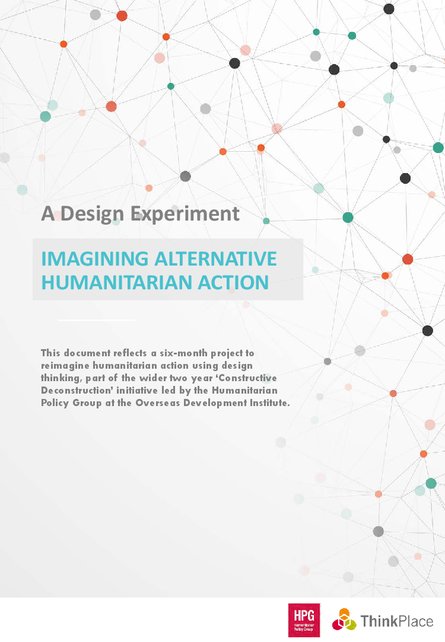
Recent efforts to reform the humanitarian system have resulted in tweaks to current practices without challenging the assumptions, approaches and architecture that have underpinned the system for decades. Given that the way humanitarian actors are working is simply not working, it is time for a system rethink. But what would humanitarian action look like if it were reimagined based on lived, human experiences?
As part of the Humanitarian Policy Group's ongoing work on remaking humanitarian action for the modern era, we embarked on a journey using Design Thinking to map people's actual experiences, and more importantly, to have those experiences shape what needs to change and how. We asked how international humanitarian action might become adaptable and accountable in ways that recognise people affected by crisis as the agents of change in their own lives.
This design guide documents the ideas and discussions that emerged through Design Thinking in order to reimagine humanitarian action. It documents people's stories and reflections, and frames both challenges and opportunities, barriers and enablers in a human-centred way. It envisions a framework in which future responses are based on a clear understanding of the needs of crisis-affected people and proposes ideas for how humanitarian actors might do better to meet them. Four ideas are prototyped:
- Community-led response fund: communities manage and allocate their own rapid response fund.
- Relief Watch: an independent watchdog provides a rating of performance and aid effectiveness based on user and expert reviews.
- Humanitarian social economy: humanitarian supply chains grow and support community-owned cooperatives.
- United Beyond Nations: affected people connect directly with local, national, international responders and service providers via a networked humanitarian platform.